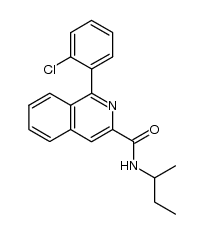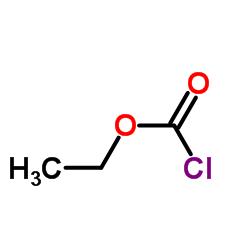PK11195

PK11195 structure
|
Common Name | PK11195 | ||
|---|---|---|---|---|
| CAS Number | 85532-75-8 | Molecular Weight | 352.857 | |
| Density | 1.2±0.1 g/cm3 | Boiling Point | 511.7±45.0 °C at 760 mmHg | |
| Molecular Formula | C21H21ClN2O | Melting Point | 74-75 | |
| MSDS | Chinese USA | Flash Point | 263.3±28.7 °C | |
Use of PK11195PK-11195 is a ligand of translocator protein (TSPO), which targets Leishmania chemotherapy, with IC50s of 14.2 μM, 8.2 μM, 3.5 μM for L. amazonensis, L. major and L. braziliensis, respectively. |
| Name | 1-(2-chlorophenyl)-N-methyl-N-(1-methylpropyl)-3-isoquinolinecarboxamide |
|---|---|
| Synonym | More Synonyms |
| Description | PK-11195 is a ligand of translocator protein (TSPO), which targets Leishmania chemotherapy, with IC50s of 14.2 μM, 8.2 μM, 3.5 μM for L. amazonensis, L. major and L. braziliensis, respectively. |
|---|---|
| Related Catalog | |
| Target |
IC50: 14.2 μM (L. amazonensis), 8.2 μM (L. major), 3.5 μM (L. braziliensis)[1]. |
| In Vitro | Median IC50 values for PK-11195 are 14.2 μM for L. amazonensis, 8.2 μM for L. major, and 3.5 μM for L. braziliensis. The selective index value for L. amazonensis is 13.7, indicating the safety of PK-11195 for future testing in mammals. Time-and dose-dependent reductions in the percentage of infected macrophages, the number of parasites per infected macrophage, and the number of viable intracellular parasites are observed. Electron microscopy reveals some morphological alterations suggestive of autophagy. Interestingly, MCP-1 and superoxide levels are reduced in L. amazonensis-infected macrophages treated with PK-11195[1]. |
| References |
| Density | 1.2±0.1 g/cm3 |
|---|---|
| Boiling Point | 511.7±45.0 °C at 760 mmHg |
| Melting Point | 74-75 |
| Molecular Formula | C21H21ClN2O |
| Molecular Weight | 352.857 |
| Flash Point | 263.3±28.7 °C |
| Exact Mass | 352.134247 |
| PSA | 33.20000 |
| LogP | 4.58 |
| Vapour Pressure | 0.0±1.3 mmHg at 25°C |
| Index of Refraction | 1.611 |
| Storage condition | Store at RT |
CHEMICAL IDENTIFICATION
HEALTH HAZARD DATAACUTE TOXICITY DATAMUTATION DATA
|
| RIDADR | NONH for all modes of transport |
|---|---|
| WGK Germany | 3 |
| RTECS | NW6987000 |
|
~84% 
PK11195 CAS#:85532-75-8 |
| Literature: Stevenson, Louise; Pimlott, Sally L.; Sutherland, Andrew Tetrahedron Letters, 2007 , vol. 48, # 40 p. 7137 - 7139 |
|
~% 
PK11195 CAS#:85532-75-8 |
| Literature: US4499094 A1, ; |
|
Inhibitory action of 1-(2-chlorophenyl)-N-methyl-N-(1-methylpropyl)-3-isoquinolinecarboxam ide (PK 11195) on some mononuclear phagocyte functions.
Biochem. Pharmacol. 59 , 1305-1314, (2000) Peripheral benzodiazepine receptors (PBRs) are widely distributed throughout the body, but their functions are unknown. They are found on mononuclear phagocytes, and they are up-regulated in a number ... |
|
|
Chronic exposure of rat primary astrocyte cultures to manganese results in increased binding sites for the 'peripheral-type' benzodiazepine receptor ligand 3H-PK 11195.
Neurosci. Lett. 271 , 5, (1999) Alterations of 'peripheral-type' benzodiazepine receptors (PTBRs) in brain are a feature of hepatic encephalopathy (HE). Although ammonia toxicity has been implicated in the disorder, recent findings ... |
|
|
Pharmacokinetics of the peripheral benzodiazepine receptor antagonist, PK 11195, in rats. The effect of dose and gender.
Pharmacol. Res. 41 , 461-468, (2000) In spite of the extensive use of the peripheral benzodiazepine (BZ) receptor antagonist, PK 11195 (PK), in pharmacological studies, there is a lack of information of its pharmacokinetics in the rat. I... |
| N-sec-Butyl-1-(2-chlorophenyl)-N-methyl-3-isoquinolinecarboxamide |
| UNII:YNF83VN1RL |
| MFCD00069334 |
| 3-Isoquinolinecarboxamide, 1-(2-chlorophenyl)-N-methyl-N-(1-methylpropyl)- |
| N-sec-Butyl-1-(2-chlorophenyl)-N-methylisoquinoline-3-carboxamide |




